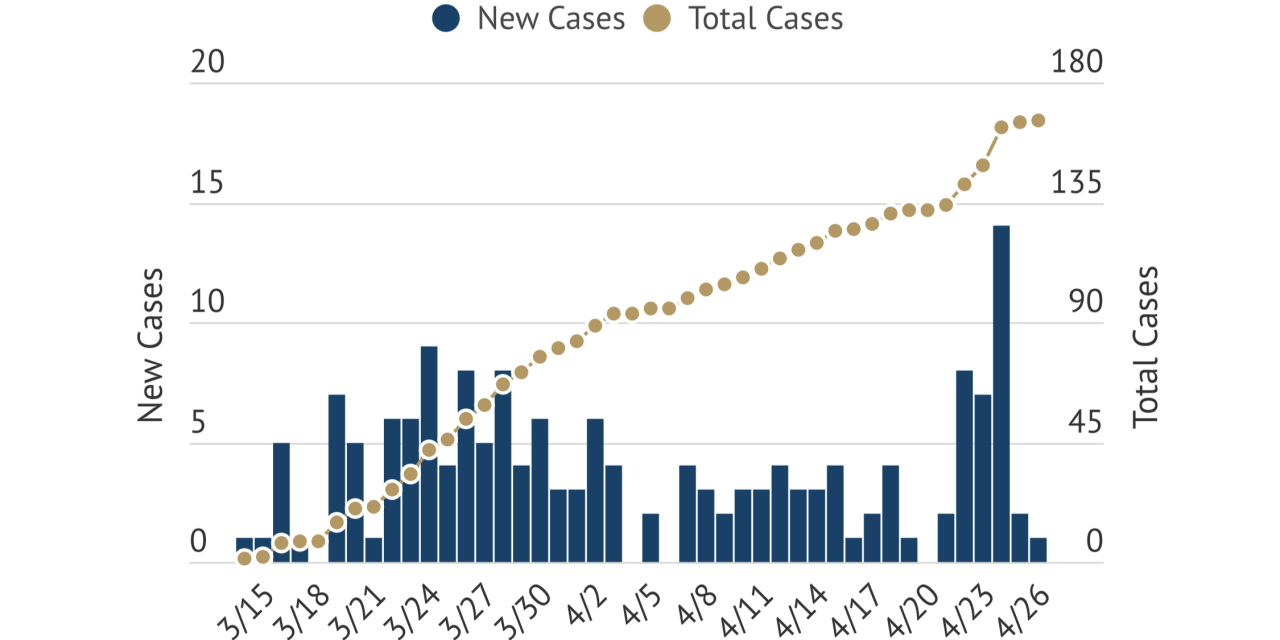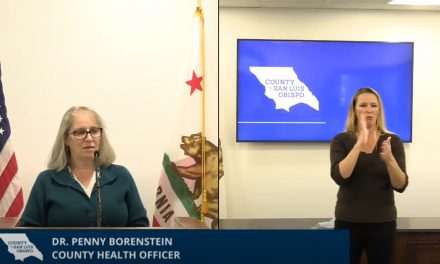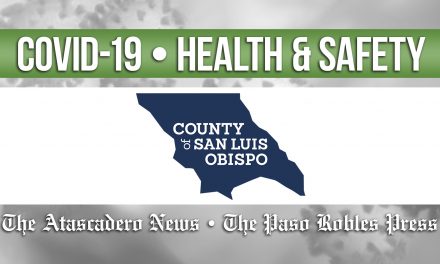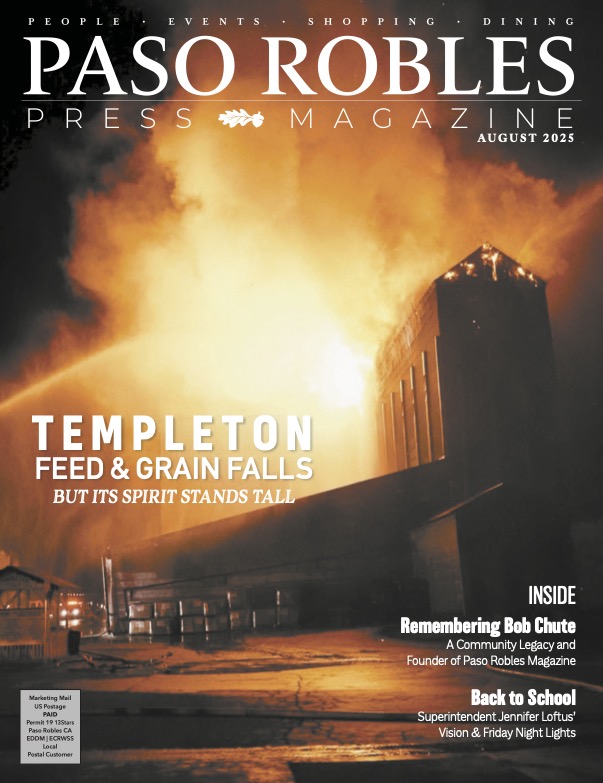Tensions rise like the seasonal temperature as the County faces a decisive week ahead
Over the weekend, the county saw three new reports of COVID-19, with two on Saturday, and one on Sunday. Today’s numbers also shifted significantly toward the positive in regards to recovered cases, with a jump of seven recovered for a total of 126. These numbers continue to fall far below levels of concern for county officials and health care capacity.
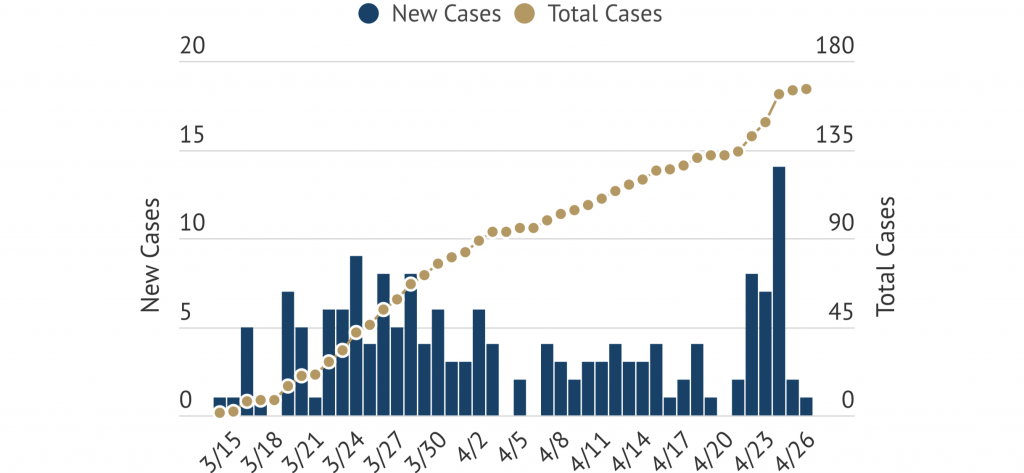
Last Friday, San Luis Obispo County Supervisor John Peschong promised the public presentation this week of the “Roadmap to Reopening” SLO County, on the tail end of a three-day spike in COVID-19 cases. SLO County Health Officer Dr. Penny Borenstein brushed off concern over the spike in cases, and assured the public that efforts toward reopening the county were not tempered by the increase in numbers.
“These new cases are not overly worrisome, but they are of note,” Borenstein said at Friday’s briefing. “We must continue our diligence. [Reopening] will be done slowly, cautiously, and with all recommendations put in place to tamp down on the spread. We are continuing to move forward on a balanced approach to a phased reopening, sector by sector, in this community.”
With growing angst among those sheltering at home, and a divide between two extreme ends of the spectrum, County officials press on toward what they have called a gradual and balanced approach to restarting the local economy and opening up the community.
On two sides of the reopening argument, heightened emotions continue to conflict with each other. A Paso Robles-based rally called “Stand for Freedom“calls for an organized “PEACEFUL civil disobedience push-back against the government,” at the end of a week that a detailed plan from local officials is promised that will provide a “roadmap to reopening,” meanwhile local letters to the editor of some online sites argue for and against reopening, with Jerry Bunin asking “Is San Luis Obispo County willing to kill us.“
County officials and local business leaders working on the “Roadmap to Reopening” have both sides of these arguments to account for as they draft the plan to submit for public opinion this coming week. Borenstein has continually stressed the capacity for care in SLO County is high, and the risk to life is low, but has consistently encouraged caution and health measures.
By the Numbers
SLO County has shown uniquely low numbers compared to other regions of California, and Borenstein’s sentiments have followed those statistical comparisons. California itself has a relatively low number of cases per capita — with a positive case count below that of Louisiana, Massachusetts, New Jersey, and New York.
By the numbers, California provides a positive test at a rate of 8.5 percent of those tested. California has tested 506,035 as of Sunday (according to Johns Hopkins University tracker). That number is 1.2 percent of the total state population, and is regarded as a substantive sample size by some physicians.
Of the 506,035 tested, 42,810 tested positive. So far in California, that represents 0.1 percent of the state population. The death rate of COVID-19 falls further down by percentage. Of the total population of California, the percentage for those that have died of COVID-19 is 0.004 percent.
When COVID-19 hit the United States in force in March, the estimates presented by the Governor of California were that 25 million would contract COVID-19, and five million Californians would need hospitalization due to the virus. Numbers have fallen far short of that, and shelter-at-home orders and personal protection equipment and physical and social distancing are credited for producing the results. Newsom’s original projection offered that 20 percent of all cases would require hospitalization. That number has been proven wrong, and SLO County has seen approximately 10 percent requiring hospitalization. Currently, three patients are hospitalized in SLO County, and with one death, the percentage of loss of life to population in SLO County is 0.0003 percent, more than 100 time lower than the death rate in California as a total.
SLO County Trends
Borenstein has related to the public that public health and safety is being monitored locally, and that local action will be taken to address local issues at a local level, and has continued to encourage distancing and hygiene as a means to prevent the spread of COVID-19. But she has also indicated the spread of COVID-19 is not a concern, but is expected, and noted that an increase of 29 cases over the course of three day are considered “relatively small numbers.”
“We are not going to be overly reactive, over one day, two days or three days of relatively small numbers,” Borenstein said. “We are still watching these trends, closely. There are a number of factors that goes into what we are seeing. Particularly, we want to note that we have low numbers in our hospitals.”
In SLO County, Borenstein has repeatedly relied on hospitalizations as a key indicator of the county’s capacity to manage the spread of COVID-19. No models of any kind to date, even models that include a future vaccine, have predicted a stopping of the spread of COVID-19. The efforts by the state and county officials have only been effective in slowing the spread and preventing an overwhelming of the health care system capacity to provide for those who need hospitalization. Health officials have not suggested that widespread infection is preventable.
As the goal of slowing the spread, or “flattening the curve,” has been accomplished, the County now turns its focus to preventing further economic damage that will produce known devastation, including a global epidemic of starvation. With six weeks of local experience, and Sweden leading as a beacon for what consequences of moderate restrictions could be, the county, state and nation are no longer working in the dark as to the management of COVID-19.
The county has preserved its right to local control by placing local shelter-at-home orders, and has lifted restrictions in certain sectors to begin the process of local recovery. The State mandates still restrict some areas of local control, and the “Roadmap to Reopening” is expected to work within the State guidance and framework.
No specific day has been given for when the public presentation of the “Roadmap” will be delivered, but Peschong told The Atascadero News that it will most likely come on Wednesday, but “could play out to Friday.”
Borenstein is expected to address the public on Monday, at 3:15 p.m. from the county’s Joint Information Center on Kansas Avenue in SLO. The briefing can be live streamed from the County’s Facebook page.
Visit our dedicated COVID-19 Page for up-to-date information for the North SLO County.

